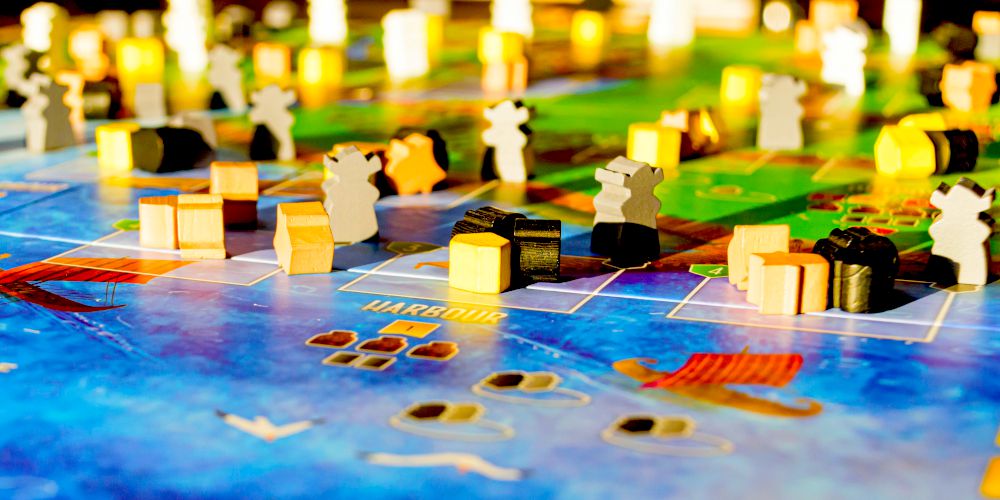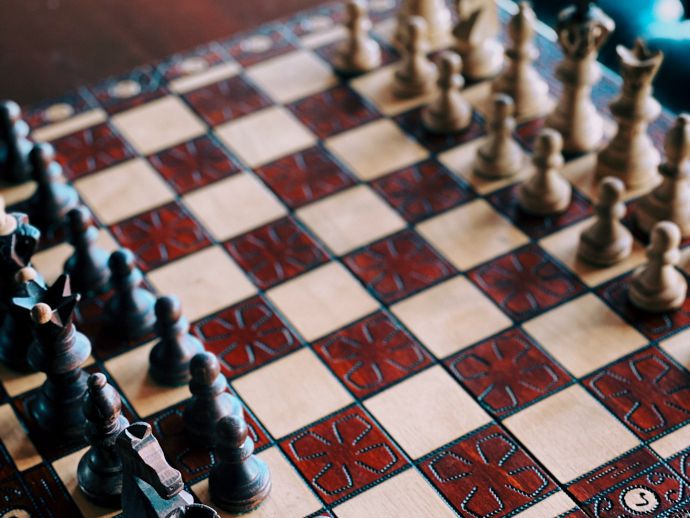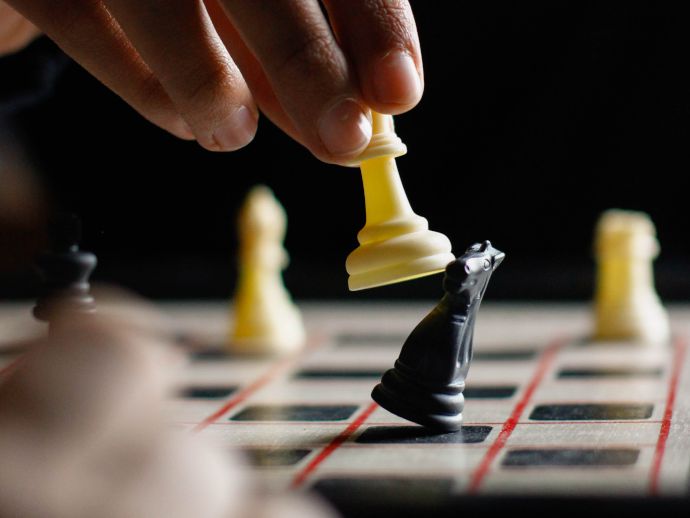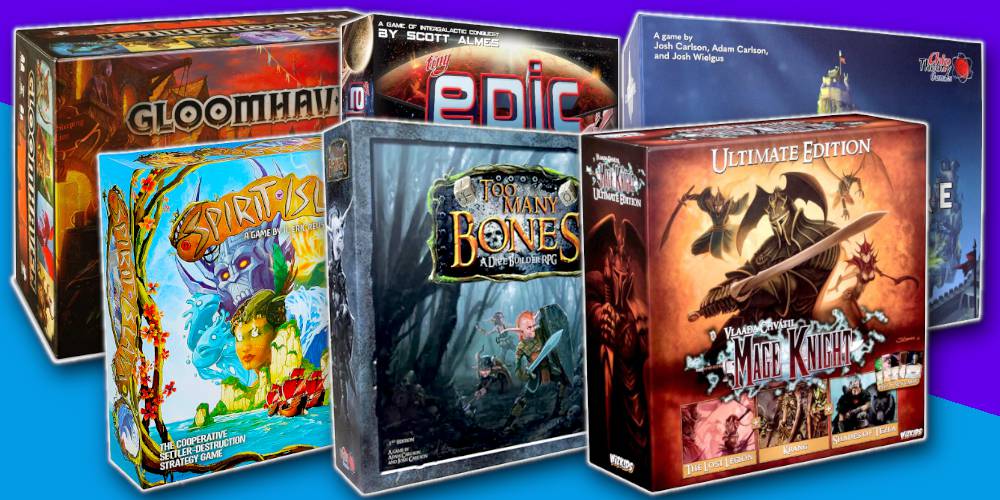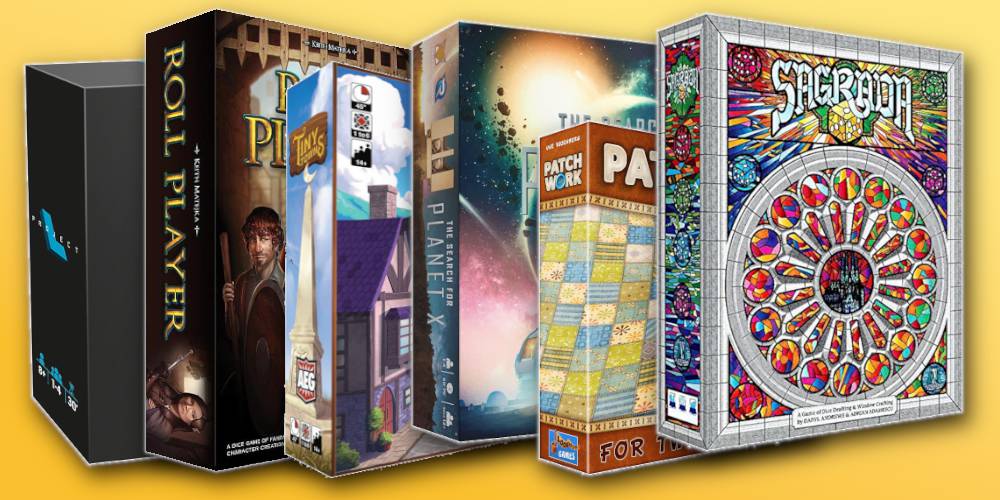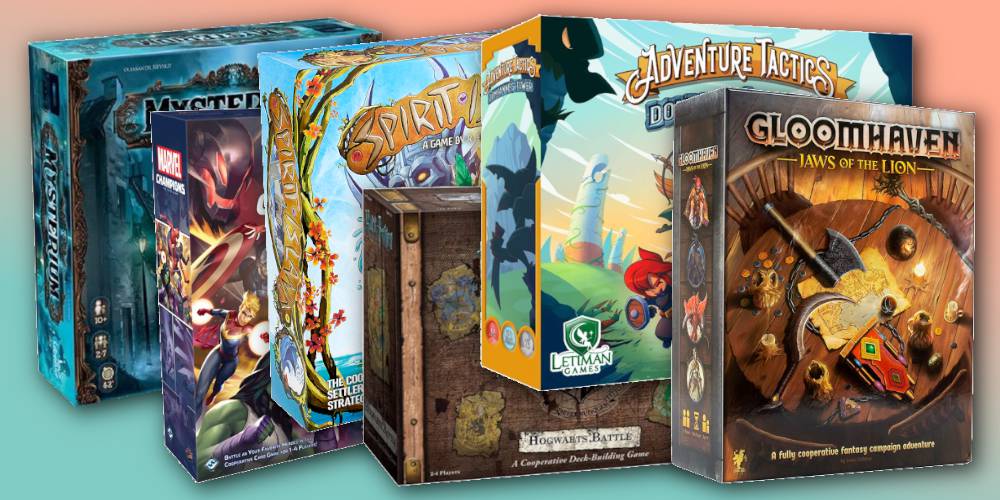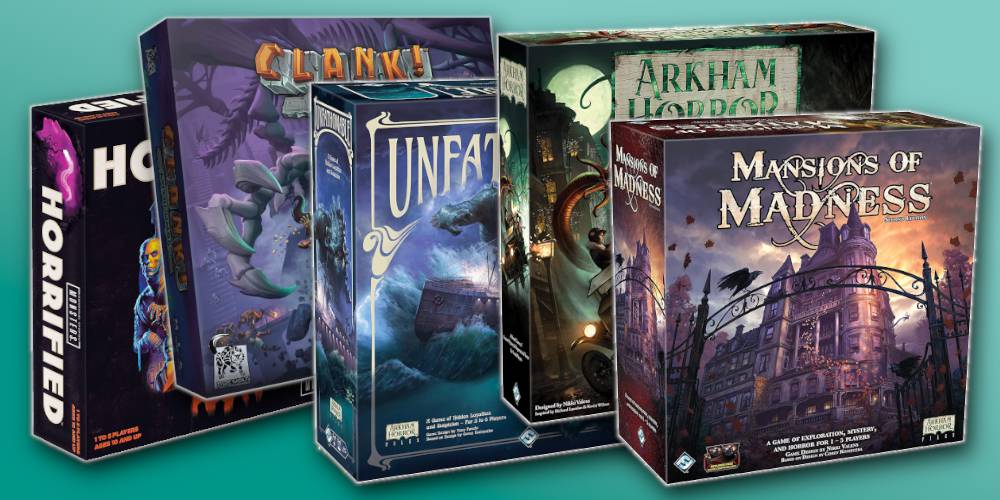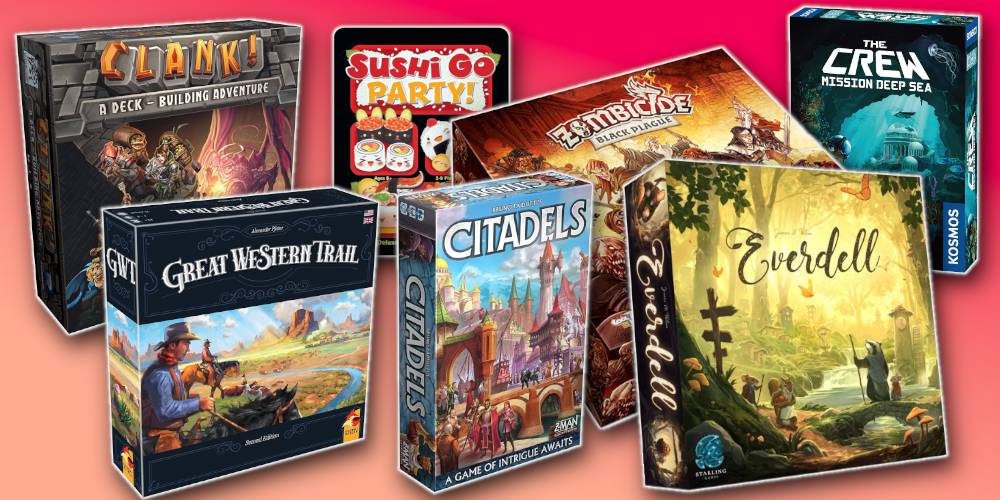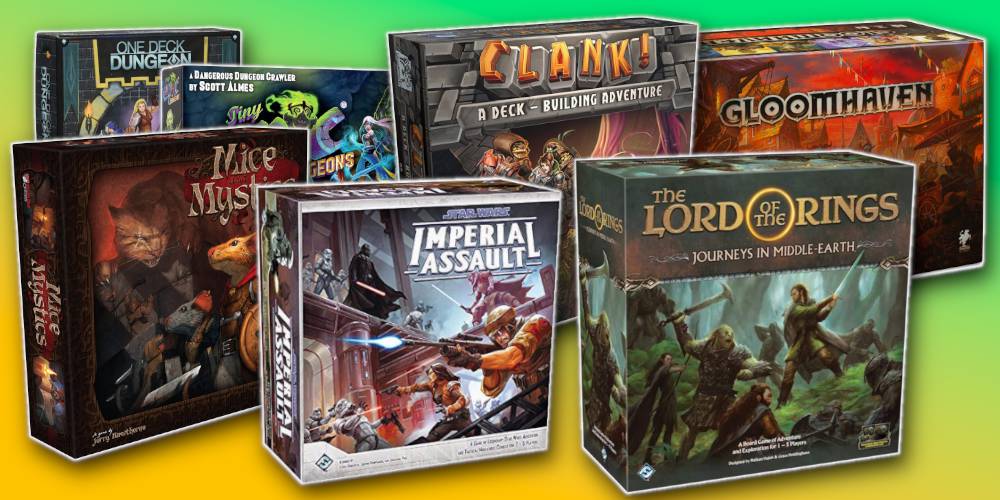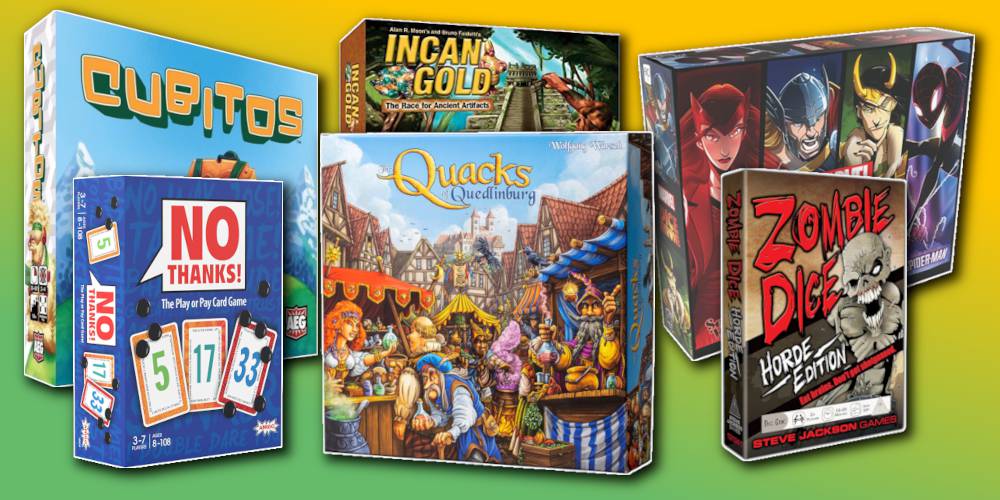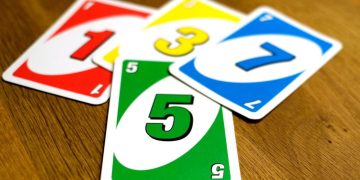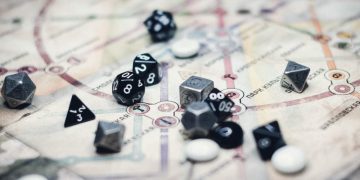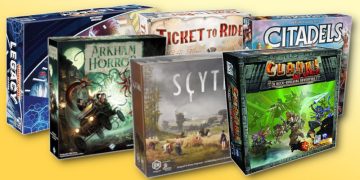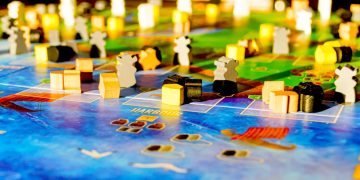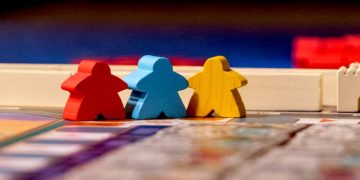Step 1: What Is the Main Objective?
The first thing any new player needs to know about a board game is… what are they trying to accomplish as a player?
Knowing the main objective provides the underlying context behind all of the game’s rules and mechanics. The main objective tells themwhythey’re playing; the game rules tell themhowto go about accomplishing the main objective.
Nothing will make sense until they know what they’re trying to do. Always lead with the main objective.
The main objective ofOnitamais “to capture the opponent’s Master or move your Master onto the opponent’s Shrine.”
You might have questions as to what a “Master” is, or what a “Shrine” is, or how you’re supposed to move your Master…
…but at least you now understand the main objective! And because you know what the end goal is, now it makes sense to explain those other details.
Step 2: What Are All the Game Pieces?
Before diving into game mechanics, I find it helpful to first set up the entire game and lay out all the game pieces. This gives the player a broad overview of what the gameplay will look like.
If there’s a game board, explain in broad strokes what the different parts of the board represent. If there are meeples or card decks, explain in broad strokes what they represent.
Don’t get into the nitty-gritty instructions yet. You just want to make sure the player understands the bigger picture, which will help when you’re explaining the smaller details.
TheOnitamagame board is a 5x5 grid, and players start with 1 Master piece and 4 Student pieces on opposite sides. Each player’s Shrine is designated on the board itself, and each player’s Master starts the game on their Shrine.
The only other components to know about inOnitamaare the movement cards, of which there are 16 and each one is unique. However, in each game, only 5 of the 16 movement cards are used (picked randomly).
The game starts with both players possessing 2 of the 5 movement cards, with 1 shared neutral movement card.
Step 3: What Are the Player Actions?
Once they know what they’re trying to do and what all the different pieces look like, they’re ready to learn what they can do as a player to accomplish the main objective.
This is the time to explain what each player does on their turn: what actions are available to them, the costs and consequences of each action, what they want to avoid, etc.
Start with ALL the core actions, then cover exceptions and special rules afterward. Avoid the temptation to hop around ("…unless you dothis…") because that’s only going to cause confusion.
InOnitama, players only have one action per turn: move one of their pieces by playing one of their 2 movement cards. All movement cards stay face-up and visible at all times.
Each movement card shows how it moves a piece; the player chooses which piece to move with that card. Then, the movement card is swapped with the shared neutral movement card.
Over the course of the game, both players will constantly be exchanging all 5 movement cards, but each player only possesses 2 of the movement cards at any time.
Step 4: What Are the Edge Cases?
Once players understand the main objective and the general idea of how the game is played, that’s when you start introducing the special rules and exceptions—if you need to introduce them at all.
Sometimes it’s best to stop at the fundamentals; the special rules and exceptions can be explained when they happen in the game.
Doing it this way lets the player focus on the important stuff and not get mentally bogged down by too much information.
Onitamadoesn’t have any special rules other than the fact you can’t move outside the game board (obvious), and if you can’t make a legal move with any piece, you still have to swap out one of your movement cards (not as obvious).
InThe Resistance, one of the special rules would be: “If the mission team proposal is vetoed five times in a row, that mission counts as a win for the Spies.”
Step 5: Can We Just Play a Round?
By this point, you’ve explained the game in disjointed bits and pieces—and even if you’ve done a perfect job, nobody can truly grasp how a board game is played without actually playing it.
So once the basics are explained, it’s best to jump into the game and start playing. It’s the only way everything will come together and click in the new player’s mind.
This “test round” is the best time to field questions. Once the test round is done, everyone should be at least somewhat comfortable with playing the game for real. Your job is now done.
Good luck and have fun!
Read next:The golden rules of board game etiquette
Example
The main objective ofOnitamais “to capture the opponent’s Master or move your Master onto the opponent’s Shrine.”
You might have questions as to what a “Master” is, or what a “Shrine” is, or how you’re supposed to move your Master…
…but at least you now understand the main objective! And because you know what the end goal is, now it makes sense to explain those other details.
Before diving into game mechanics, I find it helpful to first set up the entire game and lay out all the game pieces. This gives the player a broad overview of what the gameplay will look like.
If there’s a game board, explain in broad strokes what the different parts of the board represent. If there are meeples or card decks, explain in broad strokes what they represent.
Don’t get into the nitty-gritty instructions yet. You just want to make sure the player understands the bigger picture, which will help when you’re explaining the smaller details.
Example
TheOnitamagame board is a 5x5 grid, and players start with 1 Master piece and 4 Student pieces on opposite sides. Each player’s Shrine is designated on the board itself, and each player’s Master starts the game on their Shrine.
The only other components to know about inOnitamaare the movement cards, of which there are 16 and each one is unique. However, in each game, only 5 of the 16 movement cards are used (picked randomly).
The game starts with both players possessing 2 of the 5 movement cards, with 1 shared neutral movement card.
Once they know what they’re trying to do and what all the different pieces look like, they’re ready to learn what they can do as a player to accomplish the main objective.
This is the time to explain what each player does on their turn: what actions are available to them, the costs and consequences of each action, what they want to avoid, etc.
Start with ALL the core actions, then cover exceptions and special rules afterward. Avoid the temptation to hop around ("…unless you dothis…") because that’s only going to cause confusion.
Example
InOnitama, players only have one action per turn: move one of their pieces by playing one of their 2 movement cards. All movement cards stay face-up and visible at all times.
Each movement card shows how it moves a piece; the player chooses which piece to move with that card. Then, the movement card is swapped with the shared neutral movement card.
Over the course of the game, both players will constantly be exchanging all 5 movement cards, but each player only possesses 2 of the movement cards at any time.
Once players understand the main objective and the general idea of how the game is played, that’s when you start introducing the special rules and exceptions—if you need to introduce them at all.
Sometimes it’s best to stop at the fundamentals; the special rules and exceptions can be explained when they happen in the game.
Doing it this way lets the player focus on the important stuff and not get mentally bogged down by too much information.
Example
Onitamadoesn’t have any special rules other than the fact you can’t move outside the game board (obvious), and if you can’t make a legal move with any piece, you still have to swap out one of your movement cards (not as obvious).
InThe Resistance, one of the special rules would be: “If the mission team proposal is vetoed five times in a row, that mission counts as a win for the Spies.”
By this point, you’ve explained the game in disjointed bits and pieces—and even if you’ve done a perfect job, nobody can truly grasp how a board game is played without actually playing it.
So once the basics are explained, it’s best to jump into the game and start playing. It’s the only way everything will come together and click in the new player’s mind.
This “test round” is the best time to field questions. Once the test round is done, everyone should be at least somewhat comfortable with playing the game for real. Your job is now done.
Good luck and have fun!
Read next:The golden rules of board game etiquette



![]()
